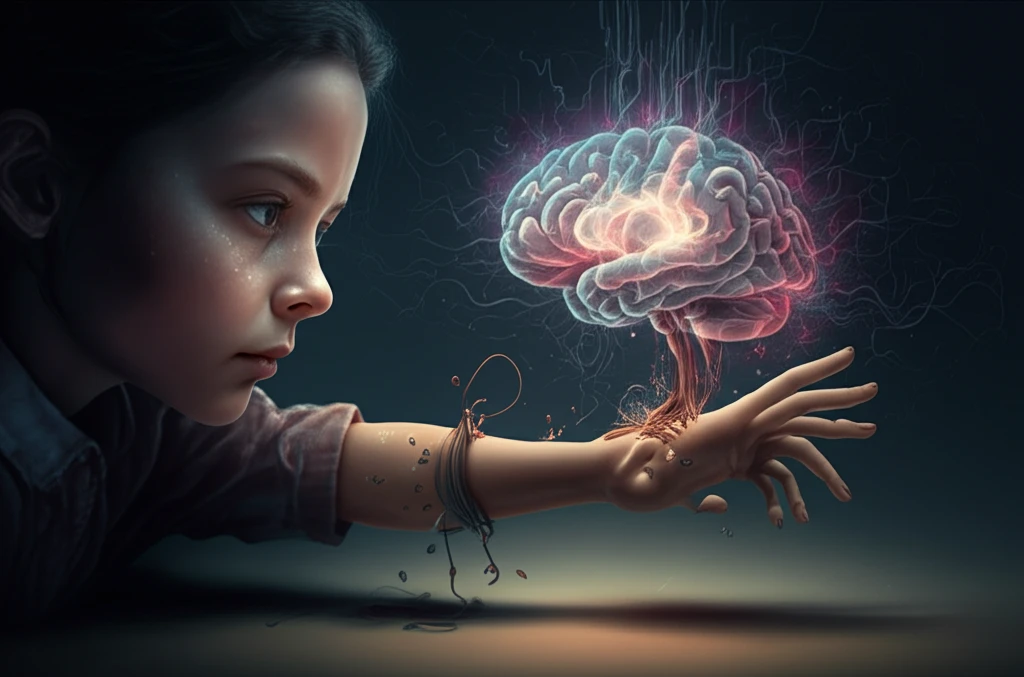
Unlock Your Mind: How Body Ownership Illusions Reveal the Secrets of Self
"Delve into the groundbreaking research exploring how our brains construct the feeling of "self" through body ownership illusions and what this means for understanding consciousness."
The sense of self is perhaps the most fundamental aspect of human consciousness. We experience the world as individuals, with bodies that are undeniably our own. But what happens when that sense of ownership is challenged? What if you could feel like a rubber hand was actually a part of you?
Scientists have been exploring these questions using body ownership illusions, most notably the rubber hand illusion (RHI). This fascinating phenomenon occurs when a person watches a rubber hand being stroked while simultaneously feeling a similar sensation on their own hidden hand. The result? Many people begin to feel as if the rubber hand is, in fact, their own.
Now, groundbreaking new research is taking this exploration even further. By using advanced techniques to monitor brain activity during the rubber hand illusion, scientists are beginning to unravel the precise neural mechanisms that create the feeling of body ownership. This isn't just a parlor trick; it's a window into the very essence of how we perceive ourselves.
Body Ownership: How the Brain Decides What's 'Mine'

The feeling of body ownership isn't something we're necessarily born with; it's a construct of the brain, constantly updated and refined through sensory input. Vision, touch, and proprioception (the sense of where our body parts are in space) all work together to create a cohesive representation of our physical form. When these senses align, our brain reinforces the feeling that our body is our own. The rubber hand illusion works because it manipulates this alignment.
- Visual Capture: Vision dominates our perception. What we see strongly influences what we feel.
- Temporal Contiguity: The sensations must occur close together in time. Synchronized stroking is key.
- Spatial Congruence: The rubber hand must be positioned in a realistic location relative to our own body.
The Implications: Beyond the Illusion
The research has implications far beyond simply understanding a curious illusion. By identifying the neural mechanisms underlying body ownership, scientists are gaining insights into a range of conditions, including body dysmorphic disorder, phantom limb pain, and even schizophrenia. Understanding how the brain constructs the sense of self could lead to new therapies and interventions for these challenging conditions. It also deepens our understanding of consciousness itself—how our brains create the feeling of being "us."
